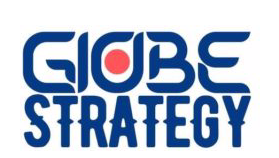When to Go Global
Cost Leadership
A global strategy may be appropriate in industries where firms face strong pressures to reduce costs but weak pressures to respond locally; globalization therefore allows these firms to sell a standardized product worldwide. By expanding to a broader consumer base, these firms can take advantage of scale economies (cost advantages that an enterprise obtains due to expansion) and learning-curve effects because they are able to mass-produce a standard product that can be exported (providing that demand is greater than the costs involved).
Market Expansion
Globalization is not limited to cost leadership, however. Differentiation strategies also enable economies of scope, either fulfilling different needs in different markets with a similar series of products, or developing new products based upon the needs and consumption habits of a new market. Differentiation as part of a global strategy will often require localization, as organizations must adapt to consumer tastes better to compete in the new country. For example, Coca Cola tastes different depending on the country where it is bought because of differences in local preferences.
Sourcing
Other popular and primary strategic reasons for globalization include building supplier relationships, improving access to raw materials (unique to a given region), and cutting costs by using other regions’ specializations. Starbucks sources coffee beans from all over the world, as climate dramatically affects the type and quality of the bean. The globalization strategy of Starbucks—while it includes selling in many countries—is hugely depending on global sourcing, and strategic managers must carefully monitor this process for costs and benefits.
Global strategies require firms to coordinate tightly their product and pricing strategies across international markets and locations; therefore, firms that pursue a global strategy are typically highly centralized.
Corporate Strategy Implications
With global markets in mind, strategic managers must expand their perspective and use varied models to generate different strategies for different places. For example, companies must now conduct a PESTEL analysis for each region in which they operate and recognize expense and competition deviations between regions. For example, tariffs in country A may be much higher than country B, but country B has fewer individuals willing to pay a high price for the good the organization is selling. Managers must conduct a cost/benefit analysis to identify which country actually offers the best profit potential. These analyses are how strategists incorporate global concerns into strategic management.

Source: Boundless. “Global Strategy.” Boundless Management. Boundless, 17 Nov. 2014. Retrieved 07 Feb. 2015 from https://www.boundless.com/management/textbooks/boundless-management-textbook/strategic-management-12/common-types-of-corporate-strategies-90/global-strategy-436-1455/
